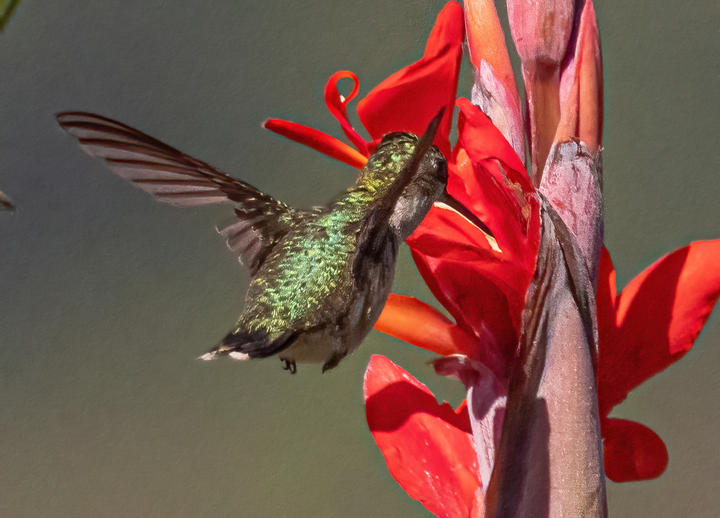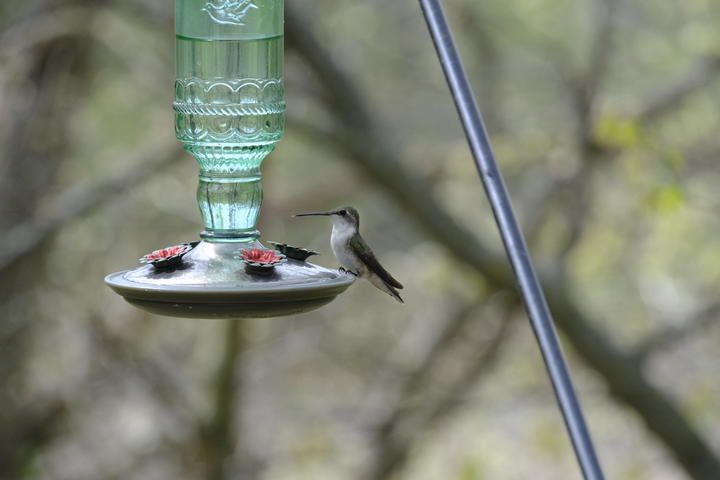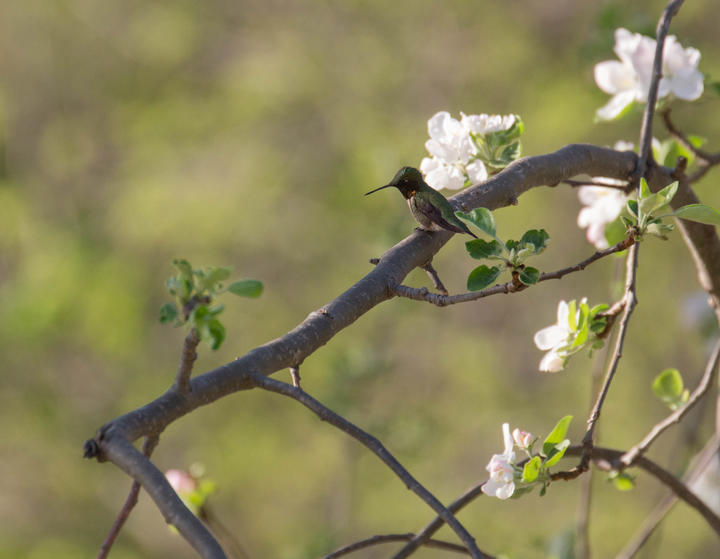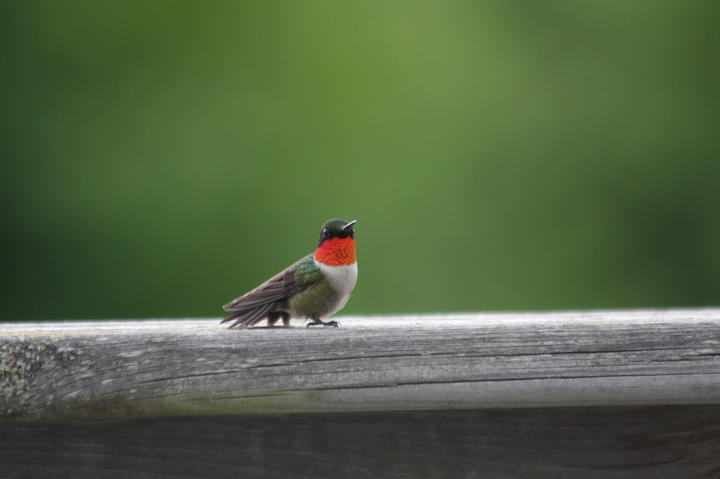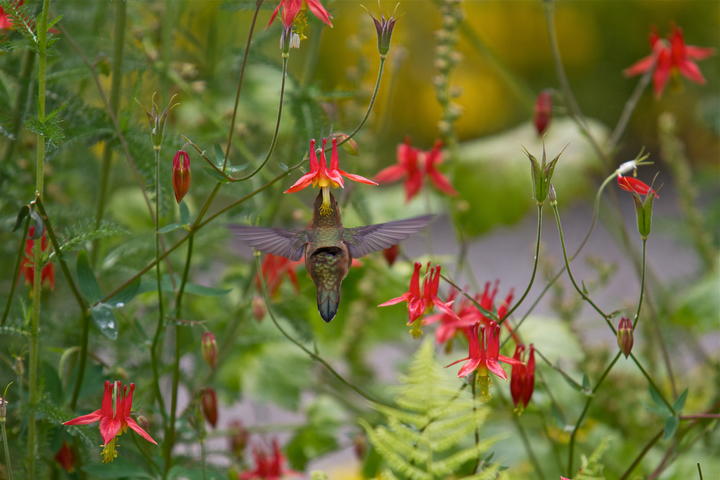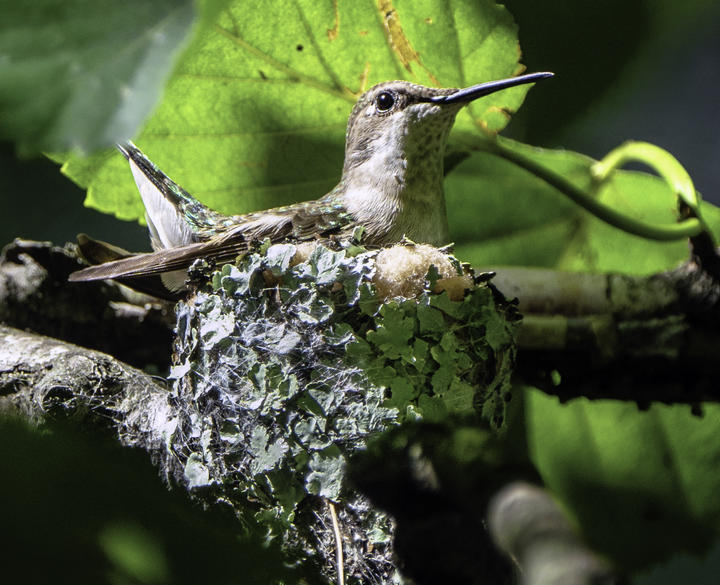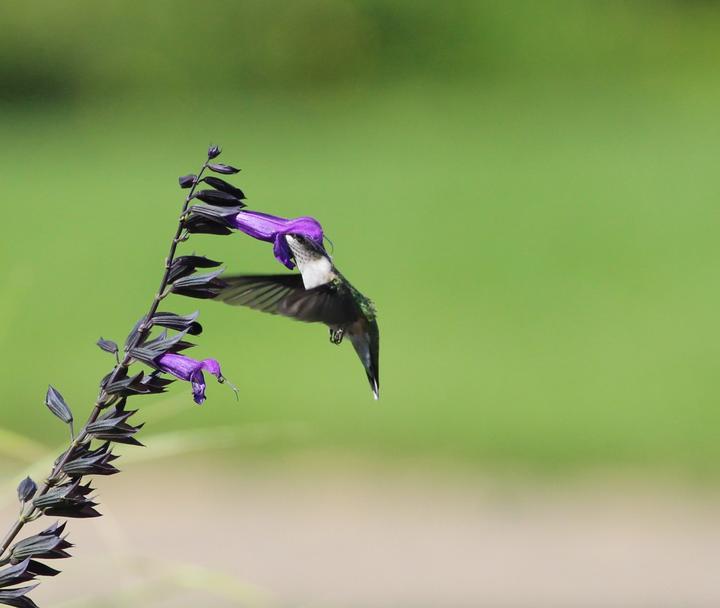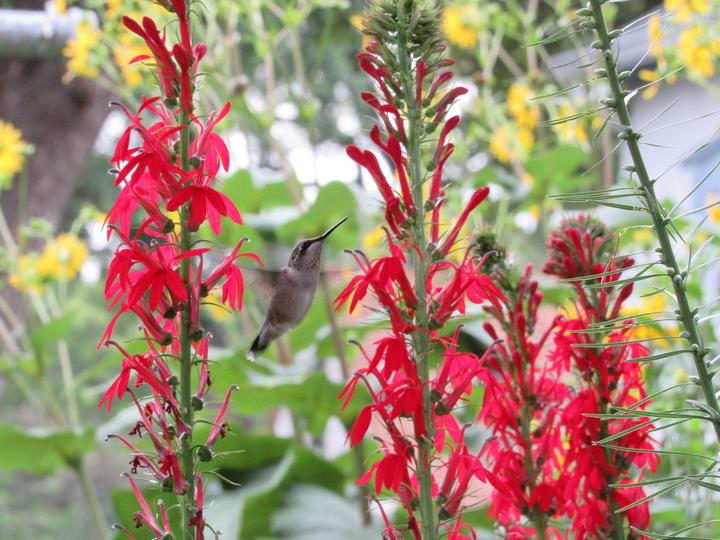More names for this bird
Anishinaabemowin: Nenookaasi
The Dakota and Anishinaabe were among the earliest people to name Minnesota’s plants and animals, as well as to understand them in relation to Minnesota’s climate and seasons. Those original names are still in use, and several are included on the Season Watch website. However, complete translations were not available.
Latin (or scientific name): Archilochus colubris
The scientific community has a convention of assigning agreed-upon Latin names to every kind of organism. Using scientific names helps people communicate confidently about the same organism and organize lifeforms based on how closely related they are.
Page contents
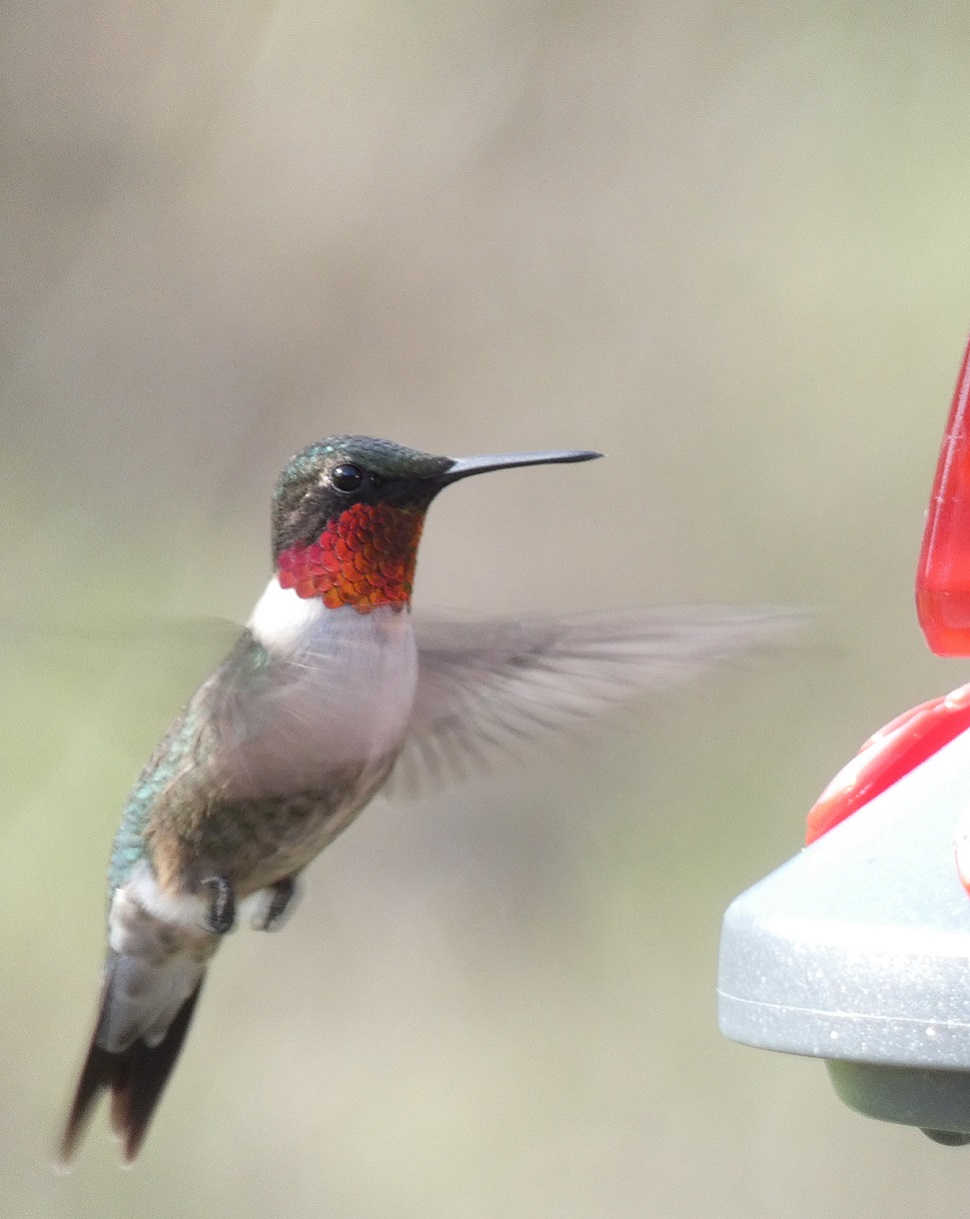
May 12, 2022, Wright County, Minnesota
Photo by © manticore, some rights reserved (CC-BY-NC-ND 4.0)
iNaturalist observation
About the ruby-throated hummingbird
- The ruby-throated hummingbird is a hovering bird that is much smaller than a sparrow. It is emerald green on top and white or gray below. The male has a black throat that appears irridescent red in certain light.
- Flapping their wings at fifty-three times per second requires a lot of calories, which hummingbirds glean from flower nectar (or sugar-water feeders, as pictured left). In addition to nectar, hummingbirds eat insects such as mosquitoes, fruit flies and gnats.
- The eggs are incubated for about two weeks. Young leave the nest roughly three weeks after hatching.
- Fun fact: Hummingbirds can shuffle along a perch, but their legs are too short to hop or walk. Amazingly, a hummingbird can raise its foot over its wing to to scratch its own head or arrange its own feathers.
- Ruby-throated hummingbirds migrate. Expand the "Migration animation" section below to learn more.
Migration animation
Migration animation
Click the full-frame icon (lower right corner of video) to play at full size.
More about eBird's abundance animations
eBird data from 2006-2020. Estimated for 2020. Fink, D., T. Auer, A. Johnston, M. Strimas-Mackey, O. Robinson, S. Ligocki, W. Hochachka, L. Jaromczyk, C. Wood, I. Davies, M. Iliff, L. Seitz. 2021. eBird Status and Trends, Data Version: 2020; Released: 2021. Cornell Lab of Ornithology, Ithaca, New York. https://doi.org/10.2173/ebirdst.2020
Visual guide to phenology
Watch for changes in hummingbirds' presence (or absence), abundance, and behaviors at different times of year. Also, pay attention to when young-of-year appear and develop.
Note to observers
This page explains general clues to watch for when observing ruby-throated hummingbird phenology. However, this page does not explain how to identify this bird or collect data in a standardized way.
- For help with identification, see The Cornell Lab's All About Birds.
- For guidance on collecting data, see Nature’s Notebook.
More resources
Keep exploring Season Watch
Keep exploring Season Watch
Co-author: Jayme Hogan, Minnesota Master Naturalist
